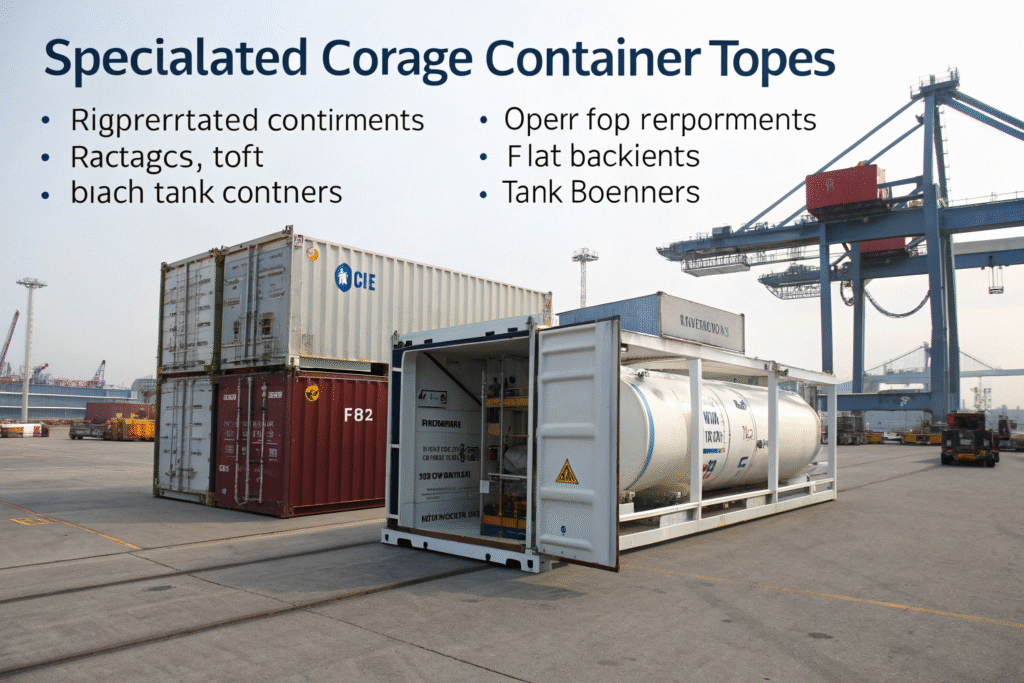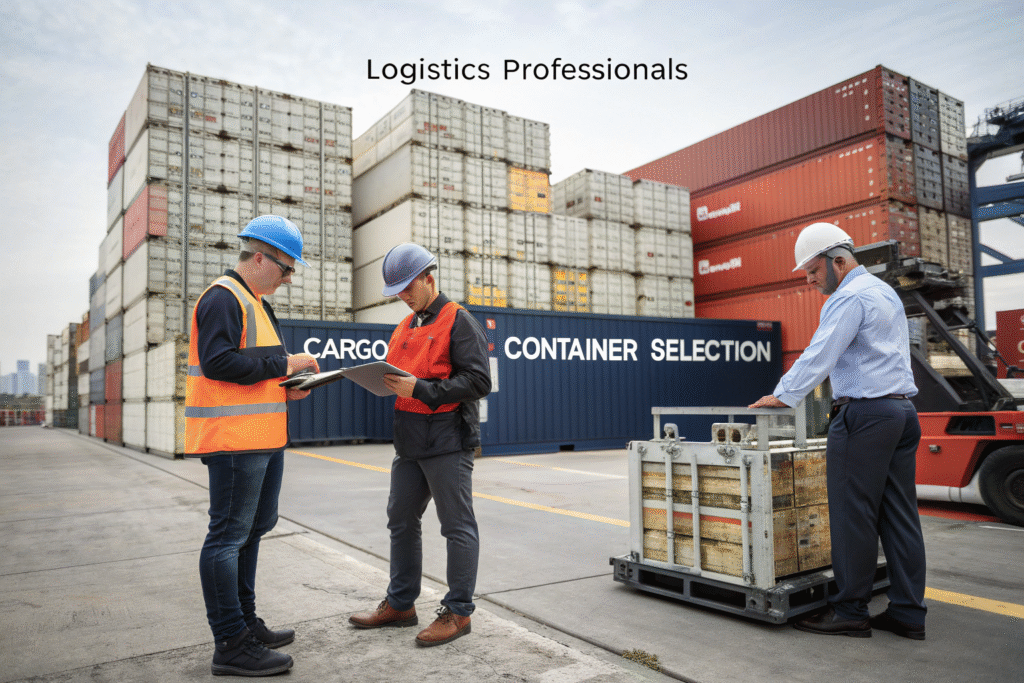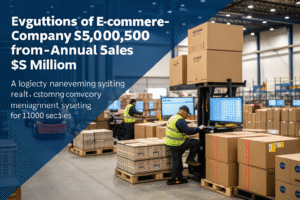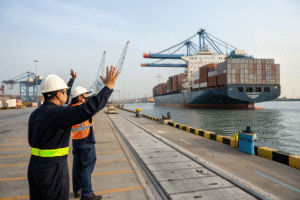When one of our furniture importers switched from standard containers to high-cube equipment, they increased their load volume by 12% and saved $3,400 per shipment. As founder of GeeseCargo, I've learned that container selection isn't just about fitting goods into a box—it's a strategic decision that directly impacts your profitability, cargo safety, and supply chain efficiency.
Choosing the right container involves analyzing cargo dimensions, weight, special requirements, and transportation route. Standard 20ft and 40ft containers work for most general cargo, while specialized equipment like reefers, flat racks, or high-cube containers address specific needs. Proper selection can reduce costs by 15-30% while improving cargo safety.
Container selection mistakes can lead to damaged goods, rejected shipments, or unexpected costs that erase your profit margins. Understanding the container ecosystem and matching equipment to your specific cargo characteristics is fundamental to successful international shipping.
What Are the Standard Container Options and Their Best Uses?
The container industry has standardized around several common sizes and types that serve most shipping needs. Knowing which standard option fits your cargo profile is the first step in optimization.

When Should You Choose 20ft vs 40ft Containers?
The 20-foot container (20DV) offers 1,170 cubic feet capacity and handles up to 28 metric tons. It's ideal for dense, heavy cargo like machinery, metals, or packaged liquids where weight rather than volume is the limiting factor. The smaller size also provides more routing flexibility to destinations with infrastructure limitations.
The 40-foot standard container (40DV) provides 2,390 cubic feet—over double the capacity—with similar weight limits. It's perfect for voluminous but not extremely heavy goods like furniture, consumer products, or apparel. The per-container shipping cost is only 15-25% higher than 20ft units, making them more cost-effective for volume shipments.
The break-even point typically occurs around 18-22 cubic meters of cargo. Below this volume, 20ft containers usually offer better value; above it, 40ft containers become more economical. Always calculate both options during your shipment planning.
What Advantages Do High-Cube Containers Offer?
The 40-foot high-cube container (40HC) provides an extra foot of height (9'6" vs 8'6"), delivering 2,690 cubic feet—12% more volume than standard containers. This extra space costs only 5-10% more in freight charges, making them highly efficient for lightweight, bulky items.
High-cube containers excel for furniture, home goods, plastics, and seasonal items like patio sets or Christmas decorations. The additional vertical space allows better stacking efficiency and often eliminates the need for a second container. However, they're unsuitable for destinations with height restrictions or equipment limitations.
For weight-limited cargo, high-cube containers may not reach their volumetric potential before hitting weight maximums. Always check both your volume requirements and weight constraints before selecting this option.
When Do You Need Specialized Container Equipment?
Standard containers handle most cargo, but specialized situations require equipment designed for specific challenges. Recognizing when your cargo needs special handling prevents damage and compliance issues.

What Cargo Requires Refrigerated Containers?
Reefer containers maintain precise temperature control from -30°C to +30°C, making them essential for perishable commodities. Foods like fruits, vegetables, seafood, and dairy products represent the most common reefer cargo, but they're also used for pharmaceuticals, chemicals, and certain electronics requiring climate control.
The decision point comes when your cargo requires specific temperature maintenance or atmosphere control. Reefers cost 50-100% more than standard containers and require specialized handling, so only use them when necessary. Many importers mistakenly pay for reefers when their cargo only needs ventilation, which standard containers can provide with proper configuration.
Advanced reefers offer humidity control, modified atmospheres, and remote monitoring. These features come at a premium but can be essential for high-value perishables or sensitive medical products.
When Should You Consider Open-Top or Flat-Rack Containers?
Open-top containers feature removable tarpaulin roofs instead of solid tops, enabling top loading for oversized items. They're ideal for machinery, construction equipment, or tall items that won't fit through standard container doors. The open top allows crane loading from above, simplifying the process for awkwardly shaped cargo.
Flat-rack containers provide completely open sides and ends, suitable for extra-wide or overweight cargo like vehicles, industrial equipment, or large pipes. They come in collapsible and fixed versions, with collapsible offering better repositioning economics but higher initial cost.
Both options cost 30-60% more than standard containers and may require special permits for oversized loads. The additional expense is justified when your cargo dimensions exceed standard container limitations or when loading access is restricted.
How Do Cargo Characteristics Influence Container Choice?
Understanding your cargo's physical properties, handling requirements, and value helps match it with the optimal container type. This analysis prevents both underutilization and dangerous overloading.

How Does Cargo Density Affect Container Selection?
High-density cargo (over 600 kg/cbm) typically maximizes weight capacity before filling container volume. For these goods, 20ft containers often provide the most economical solution since you'll hit weight limits before utilizing all space in larger containers.
Low-density cargo (under 300 kg/cbm) benefits from 40ft high-cube containers since volume becomes the limiting factor. The extra cubic capacity allows you to maximize container utilization before approaching weight restrictions.
Medium-density cargo (300-600 kg/cbm) requires careful calculation of both weight and volume constraints. Create loading plans that optimize both dimensions, sometimes mixing cargo types to achieve better container utilization.
What Special Handling Requirements Influence Container Choice?
Hazardous materials require containers certified for dangerous goods, proper labeling, and sometimes specific ventilation or safety features. The container must comply with International Maritime Dangerous Goods codes and carrier-specific requirements.
High-value cargo may need secure containers with tamper-proof seals, additional locking mechanisms, or tracking devices. While standard containers can be enhanced with security features, some shippers prefer dedicated equipment for sensitive shipments.
Moisture-sensitive goods require proper ventilation and sometimes desiccants to prevent condensation damage. Understanding container ventilation options and moisture control techniques is essential for commodities like paper products, certain foods, or electronics.
What Operational Factors Should Influence Your Decision?
Beyond cargo characteristics, operational considerations like destination infrastructure, shipping route, and equipment availability impact container selection.

How Does Destination Infrastructure Affect Container Choice?
Port equipment limitations may restrict certain container types at smaller or developing ports. Always verify that destination ports can handle high-cube, reefer, or specialized containers before booking.
Inland transportation constraints, particularly tunnel heights, bridge weight limits, or road regulations, may dictate container specifications. European destinations often have stricter size and weight regulations than Asian or American routes.
Equipment availability varies by trade lane and season. During peak periods, standard containers may be readily available while specialized equipment requires advanced booking or carries premium pricing.
What Role Does Shipping Route Play in Container Selection?
Transit time affects container choice for time-sensitive or climate-impacted cargo. Longer voyages may require more robust packaging or different ventilation strategies than shorter routes.
Weather conditions along the route influence container specification. Rough seas or extreme temperature variations might necessitate specialized equipment or additional securing methods.
Intermodal transitions (ship-to-rail or ship-to-truck) impact container structural requirements. Containers moving through multiple transport modes need durability that single-mode containers might not require.
Conclusion
Choosing the right container requires balancing cargo characteristics, cost considerations, and operational realities. The most successful shippers develop container selection protocols that systematically evaluate each shipment against established criteria rather than defaulting to familiar options.
At GeeseCargo, we've helped clients reduce their shipping costs by an average of 18% through optimized container selection. The process begins with accurate cargo profiling and extends through the entire logistics chain to final destination delivery. Remember that the cheapest container option isn't always the most economical when considering total supply chain costs.
Start by documenting your cargo specifications thoroughly—dimensions, weight, special handling needs, and value. Then match these requirements against available container options, considering both direct costs and potential risk factors. This disciplined approach transforms container selection from an administrative task into a strategic advantage.









